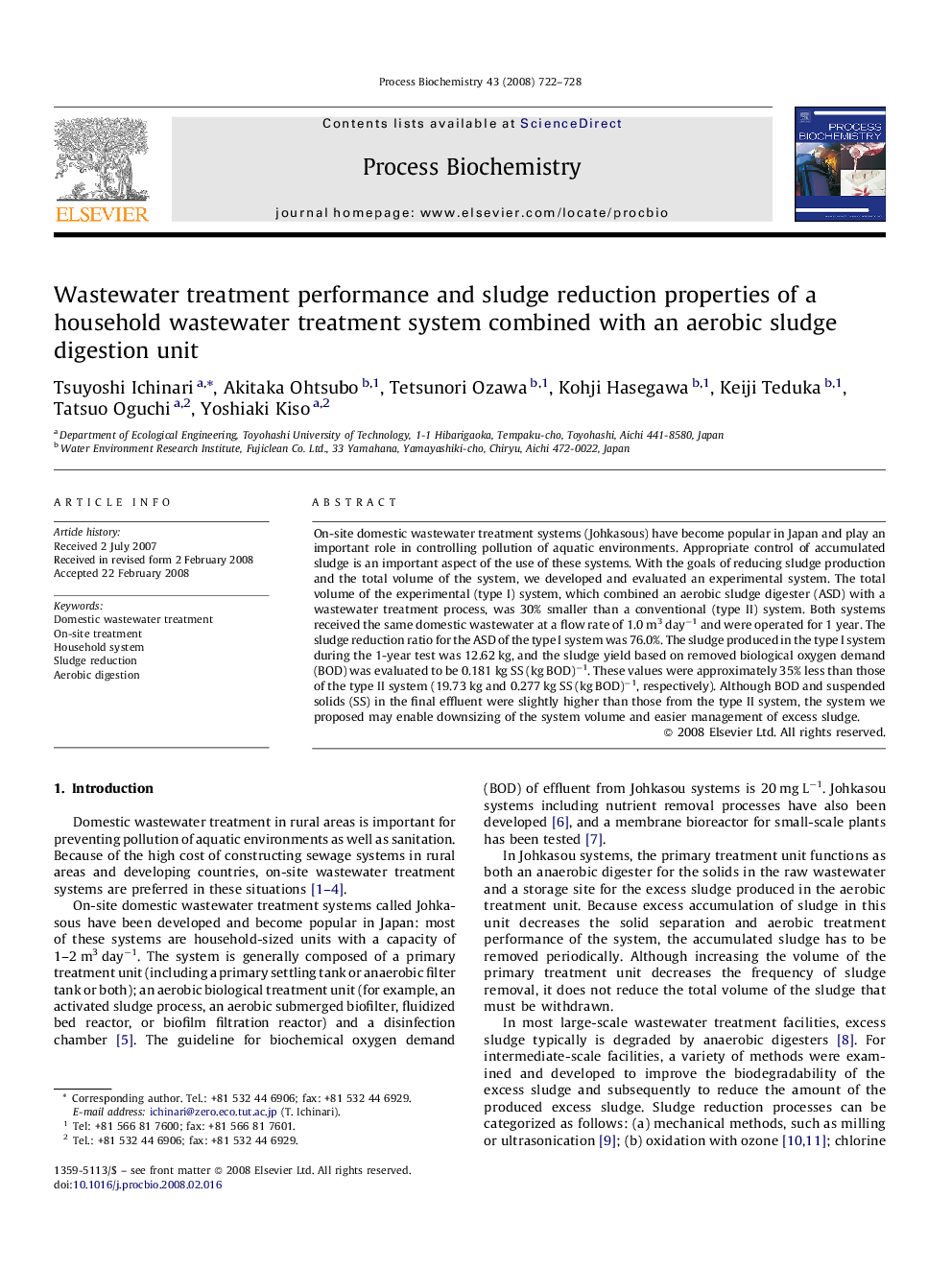| Article ID | Journal | Published Year | Pages | File Type |
|---|---|---|---|---|
| 35569 | Process Biochemistry | 2008 | 7 Pages |
On-site domestic wastewater treatment systems (Johkasous) have become popular in Japan and play an important role in controlling pollution of aquatic environments. Appropriate control of accumulated sludge is an important aspect of the use of these systems. With the goals of reducing sludge production and the total volume of the system, we developed and evaluated an experimental system. The total volume of the experimental (type I) system, which combined an aerobic sludge digester (ASD) with a wastewater treatment process, was 30% smaller than a conventional (type II) system. Both systems received the same domestic wastewater at a flow rate of 1.0 m3 day−1 and were operated for 1 year. The sludge reduction ratio for the ASD of the type I system was 76.0%. The sludge produced in the type I system during the 1-year test was 12.62 kg, and the sludge yield based on removed biological oxygen demand (BOD) was evaluated to be 0.181 kg SS (kg BOD)−1. These values were approximately 35% less than those of the type II system (19.73 kg and 0.277 kg SS (kg BOD)−1, respectively). Although BOD and suspended solids (SS) in the final effluent were slightly higher than those from the type II system, the system we proposed may enable downsizing of the system volume and easier management of excess sludge.
